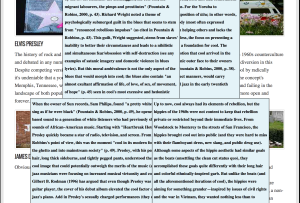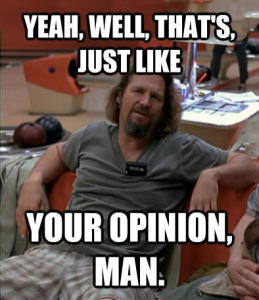Tuesday (Heuristic developed and applied)
Heuristic Developed
In a paper called “The Affect Heuristic”, Slovic et al. (2007) proposed that “images, marked by positive and negative affective feelings, guide judgment and decision making.” For each object and event encountered, people “consult or refer to an ‘affect pool’ containing all the positive and negative tags consciously or unconsciously associated with the representations” (1335).
Building on the work done by Robert Zajonc (1968) and Winkielman et al. (1997), Slovic et al. (2007) include “controlled exposure” as an influence on how an image will affect people (1336). Changing this slightly to work within the realm of a heuristic, I am proposing the first aspect be a familiarity with the artifact. Having seen or interacted with an artifact before influences the degree of how much a person is affected by it.
Describing the work of Hsee (1996a,b, 1998), Slovic et al. (2007) introduce the concept of “evaluability to describe the interplay between the precision of an affective impression and its meaning or importance for judgment and decision making” (1337; original emphasis). In action, it is the “weight of a stimulus attribute in an evaluative judgment or choice is proportional to the ease or precision with which the value of that attribute (or a comparison on the attribute across alternatives) can be mapped into an affective impression” (1340). For the inclusion within a heuristic, I switch this to evaluative knowledge. Having experienced the artifact before or not influences affects how a person understands an object and associated judgements.
Cataloging the work done on gambling and assumed probabilities, Slovic et al. (2007) list a fourth aspect of their research as a collision between affect and knowledge of outcomes. Slovic et al. (2007) write, “When the quantities or outcomes to which these probabilities apply are affectively pallid, probabilities carry much more weight in judgments and decisions. However, just the opposite occurs when the outcomes have precise and strong affective meanings — variations in probability carry too little weight” (1340). Changed for a heuristic, this becomes affective assumed outcome. Through having a strong affective meaning tied to an event or object, the probability of the outcome does not matter as much.
Developed, then, the completed affective heuristic becomes:
- Familiarity
- Evaluative knowledge
- Affective assumed outcome
Heuristic Applied

I have played the video game Journey for the PS3 many times. Developed by Thatgamecompany, it represents for many (including myself) one of the clearest implementations of Csíkszentmihályian Flow, purposely avoiding many of the immersion-breaking aspects of other games like long cut-scenes or lack of control during places. The game is designed and presented in such a way to illustrate the journey both down into a dark space and the triumphant rise back out, too, demonstrating a direct encoding of the monomyth.
Approached from the affective heuristic, I have a large degree of familiarity with the game. Having completed it many times, I am knowledgeable of its environments and puzzle aspects. However, because when played online it will pair you with another random player (whom you cannot direct communicate with), the game also includes an unpredictable element. While I am familiar with the mechanics, I am unfamiliar with whatever actions another player may take.
My ability to judge the game also comes from these extended experiences. My evaluative knowledge, therefore, is increased. I can make choices within and about the game based on my previous experiences and positive associations. However, having those positive feelings also affective me in negative ways. By being overly positive, I might overlook choices within and about the game.
This also plays into my understanding of the probabilities within the game. My overly positive feelings on the game color my interpretation of the events and chances of things happening. There is a distance between an objective understanding and my emotional one.
Wednesday (Heuristics Reviewed)
Works Cited:
Slovic, Paul, Finucane, Melissa L., Peters, Ellen, and MacGregor, Donald G. The Affect Heuristic. European Journal of Operational Research. European Journal of Operational Research 177 (2007) pp. 1333–1352 doi:10.1016/j.ejor.2005.04.006




